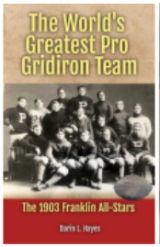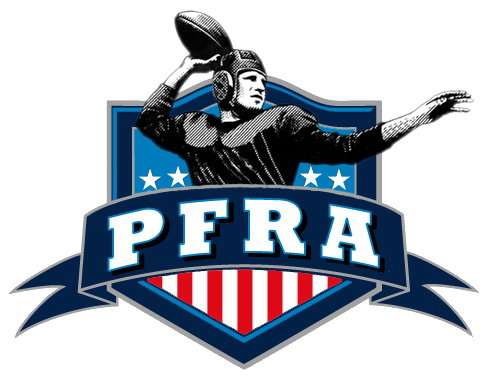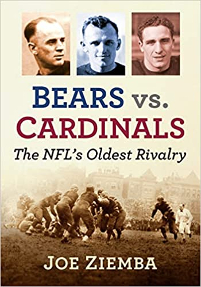Retired Jersey Numbers of the Indianapolis Colts
The Indianapolis Colts, a franchise with a rich history dating back to the 1950s, boasts a select group of retired jersey numbers. These numbers represent the pinnacle of achievement for players who have made extraordinary contributions to the team and the sport of football.
Among the most prominent retired jerseys is number 8, worn by the legendary quarterback Johnny Unitas. Unitas, a pioneer of the modern passing game, led the Colts to multiple NFL championships and is considered one of the greatest quarterbacks of all time. His impact on the Colts' organization and the game itself is undeniable.
Another stellar Colts signal caller Peyton Manning also had his number 18 retired by the franchise.
Another iconic number retired by the Colts is number 70, donned by the late great offensive lineman, Art Donovan. Art, a fierce competitor and a pillar of the Colts' defense for over a decade, earned numerous accolades. His relentless pursuit of excellence and leadership on the field cemented his place in Colts history.
These retired jerseys serve as a constant reminder of the extraordinary individuals who have shaped the Indianapolis Colts' identity. They inspire current and future generations of players and fans alike, reminding them of the dedication, talent, and leadership required to achieve greatness.
Here are the honored players and their numbers that are not issued in Indy anymore:
-Jersey Number 18
Peyton Manning 1998–2011 Colts
-Jersey Number 19
Johnny Unitas 1956–1972
-Jersey Number 22
Buddy Young 1953–1955
-Jersey Number 24
Lenny Moore 1956–1967
-Jersey Number 70
Art Donovan 1953–1961
-Jersey Number 77
Jim Parker 1957–1967
-Jersey Number 82
Raymond Berry 1955–1967
-Jersey Number 89
Gino Marchetti 1953–1966
If you love football jersey designs and evolution, wait until you check out the History of American Football Jersey.
-Football Jersey Frequently Asked Questions
-What are American football jerseys made of? Modern jerseys are made of synthetic fibers such as polyester or a blend of different materials such as spandex. For more, check out our in-depth study of The Makeup and Materials of Football Jerseys.
-When did football jerseys start having numbers on them? Though there was documented talk of it since 1894, players only wore digits in a 1905 Iowa State at Drake game. Check out more on this story The Origins Of Football Player Numbers.
-Whose college football jersey was the first to be retired? Red Grange's Number 77 Ilinois Illini jersey was the first college uni shelved in 1925. There were a couple more about the same time, and we chatted with a college football expert historian to help divulge College Football and its First Retired Jerseys.
Among the most prominent retired jerseys is number 8, worn by the legendary quarterback Johnny Unitas. Unitas, a pioneer of the modern passing game, led the Colts to multiple NFL championships and is considered one of the greatest quarterbacks of all time. His impact on the Colts' organization and the game itself is undeniable.
Another stellar Colts signal caller Peyton Manning also had his number 18 retired by the franchise.
Another iconic number retired by the Colts is number 70, donned by the late great offensive lineman, Art Donovan. Art, a fierce competitor and a pillar of the Colts' defense for over a decade, earned numerous accolades. His relentless pursuit of excellence and leadership on the field cemented his place in Colts history.
These retired jerseys serve as a constant reminder of the extraordinary individuals who have shaped the Indianapolis Colts' identity. They inspire current and future generations of players and fans alike, reminding them of the dedication, talent, and leadership required to achieve greatness.
Here are the honored players and their numbers that are not issued in Indy anymore:
-Jersey Number 18
Peyton Manning 1998–2011 Colts
-Jersey Number 19
Johnny Unitas 1956–1972
-Jersey Number 22
Buddy Young 1953–1955
-Jersey Number 24
Lenny Moore 1956–1967
-Jersey Number 70
Art Donovan 1953–1961
-Jersey Number 77
Jim Parker 1957–1967
-Jersey Number 82
Raymond Berry 1955–1967
-Jersey Number 89
Gino Marchetti 1953–1966
If you love football jersey designs and evolution, wait until you check out the History of American Football Jersey.
-Football Jersey Frequently Asked Questions
-What are American football jerseys made of? Modern jerseys are made of synthetic fibers such as polyester or a blend of different materials such as spandex. For more, check out our in-depth study of The Makeup and Materials of Football Jerseys.
-When did football jerseys start having numbers on them? Though there was documented talk of it since 1894, players only wore digits in a 1905 Iowa State at Drake game. Check out more on this story The Origins Of Football Player Numbers.
-Whose college football jersey was the first to be retired? Red Grange's Number 77 Ilinois Illini jersey was the first college uni shelved in 1925. There were a couple more about the same time, and we chatted with a college football expert historian to help divulge College Football and its First Retired Jerseys.
Retired Jersey Numbers of the Arizona Cardinals
The Arizona Cardinals, one of the NFL's oldest franchises, have a relatively small but distinguished list of retired jerseys. This exclusive honor is reserved for players who have made extraordinary contributions to the team. Larry Wilson, a legendary safety known for his defensive prowess, holds the distinction of being the only single-digit number retired by the Cardinals. Other honorees include Pat Tillman, a beloved figure whose sacrifice continues to inspire, and offensive standouts like Stan Mauldin, J.V. Cain, and Marshall Goldberg.
These jerseys, removed from circulation, serve as enduring tributes to the legacies of these exceptional athletes.
Here is the complete list for the franchise:
-Jersey Number 8
Larry Wilson
-Jersey Number 40
Pat Tillman
-Jersey Number 77
Stan Mauldin
-Jersey Number 88
J. V. Cain
-Jersey Number 99
Marshall Goldberg
*Note 99 was brought out of retirement with permission from Goldberg's family for J.J. Watt to wear it.
If you love football jersey designs and evolution, wait until you check out the History of American Football Jersey.
-Football Jersey Frequently Asked Questions
-What are American football jerseys made of? Modern jerseys are made of synthetic fibers such as polyester or a blend of different materials such as spandex. For more, check out our in-depth study of The Makeup and Materials of Football Jerseys.
-Whose college football jersey was the first to be retired? Red Grange's Number 77 Ilinois Illini jersey was the first college uni shelved in 1925. There were a couple more about the same time, and we chatted with a college football expert historian to help divulge College Football and its First Retired Jerseys.
-When did football jerseys start having numbers on them? Though there was documented talk of it since 1894, players only wore digits in a 1905 Iowa State at Drake game. Check out more on this story The Origins Of Football Player Numbers.
-Who are some of the most famous NFL players at each jersey number? From Red Grange's jersey number 77 to Tom Brady's iconic number 12, several NFL players made their digits proud. Want to know more? You are in the right place, as we covered all 100 jersey numbers, and the best way to wear each is About Football By Numbers.
These jerseys, removed from circulation, serve as enduring tributes to the legacies of these exceptional athletes.
Here is the complete list for the franchise:
-Jersey Number 8
Larry Wilson
-Jersey Number 40
Pat Tillman
-Jersey Number 77
Stan Mauldin
-Jersey Number 88
J. V. Cain
-Jersey Number 99
Marshall Goldberg
*Note 99 was brought out of retirement with permission from Goldberg's family for J.J. Watt to wear it.
If you love football jersey designs and evolution, wait until you check out the History of American Football Jersey.
-Football Jersey Frequently Asked Questions
-What are American football jerseys made of? Modern jerseys are made of synthetic fibers such as polyester or a blend of different materials such as spandex. For more, check out our in-depth study of The Makeup and Materials of Football Jerseys.
-Whose college football jersey was the first to be retired? Red Grange's Number 77 Ilinois Illini jersey was the first college uni shelved in 1925. There were a couple more about the same time, and we chatted with a college football expert historian to help divulge College Football and its First Retired Jerseys.
-When did football jerseys start having numbers on them? Though there was documented talk of it since 1894, players only wore digits in a 1905 Iowa State at Drake game. Check out more on this story The Origins Of Football Player Numbers.
-Who are some of the most famous NFL players at each jersey number? From Red Grange's jersey number 77 to Tom Brady's iconic number 12, several NFL players made their digits proud. Want to know more? You are in the right place, as we covered all 100 jersey numbers, and the best way to wear each is About Football By Numbers.
COLLEGE HOF | ‣
Dick Modzelewski The Bio of the Gridiron Legend
Born February 16, 1931, in West Natrona, Pennsylvania, was the University of Maryland’s great Tackle Dick “Lil Mo” Modzelewski. His name is synonymous with toughness and tenacity, and he carved a distinguished path through the world of football, leaving a lasting impact at both the collegiate and professional levels.
Dick was one of three brothers that had collegiate careers for the Terps. According to the NFF’s website bio on Lil Mo in his three varsity years, Maryland had a 22-game unbeaten streak. In 1951, Maryland was ranked third in the nation and knocked off the top-ranked team, Tennessee, in the Sugar Bowl, 28-13. Dick was honored with induction into the College Football Hall of Fame in 1993 after the National Football Foundation tallied their votes.
-College Career
Modzelewski's college career flourished at the University of Maryland, where he joined his brother, Ed, on the football team. From 1948 to 1951, he played a crucial role in the Terrapins' success. A standout two-way player, Modzelewski excelled as a fullback on offense and a linebacker on defense. His exceptional performance earned him All-America honors for three consecutive years (1949-1951), a testament to his consistent dominance on the field. In 1951, he was named the Most Valuable Player of the East-West Shrine Game, further solidifying his reputation as one of the nation's top collegiate players.
-Road to the Pro Game
Modzelewski's impressive college career paved the way for a successful professional journey. The Pittsburgh Steelers drafted him in the second round of the 1952 NFL Draft. "Little Mo," as he was known, quickly made his presence felt in the NFL. His hard-nosed playing style and versatility allowed him to contribute on both sides of the ball. He played for the Steelers for four seasons (1952-1955) before moving on to the Washington Redskins (1956-1960), the Cleveland Browns (1961), and finally, the New York Giants (1962-1964). Throughout his 14-year NFL career, Modzelewski was a consistent and reliable player known for his toughness and leadership. He was a key member of the Giants team that won the NFL Championship in 1956.
-Football Legacy
Dick Modzelewski's football legacy is one of dedication, excellence, and impact. His accomplishments at the University of Maryland solidified his place among the school's all-time greats. His three All-America selections and his MVP performance in the East-West Shrine Game are testaments to his exceptional talent and dedication. In the NFL, Modzelewski proved his versatility and toughness, earning the respect of his teammates and opponents alike. He was a valuable contributor to every team he played for, and his leadership helped shape those teams' culture. Beyond his on-field achievements, Modzelewski's commitment to the game and his unwavering sportsmanship made him a role model for aspiring football players. His induction into the College Football Hall of Fame in 1993 further cemented his legacy as one of the legends of the game.
-Accolades, Awards and Career Stats
College Career:
-Three-time All-American (1949-1951)
-Most Valuable Player, East-West Shrine Game (1951)
-Inducted into the College Football Hall of Fame (1993)
Professional Career:
-NFL Champion (1956)
-14 seasons in the NFL (Pittsburgh Steelers, Washington Redskins, Cleveland Browns, New York Giants)
Career Stats:
(While exact NFL stats might vary slightly depending on the source, his primary contributions were as a two-way player, particularly on defense, and as a leader. Statistics from that era often focus on offensive production)
Dick Modzelewski's football career, marked by excellence at every level, stands as a testament to his talent, dedication, and leadership. He left an indelible mark on the game, both on and off the field, and his legacy continues to inspire generations of football players.
Dick was one of three brothers that had collegiate careers for the Terps. According to the NFF’s website bio on Lil Mo in his three varsity years, Maryland had a 22-game unbeaten streak. In 1951, Maryland was ranked third in the nation and knocked off the top-ranked team, Tennessee, in the Sugar Bowl, 28-13. Dick was honored with induction into the College Football Hall of Fame in 1993 after the National Football Foundation tallied their votes.
-College Career
Modzelewski's college career flourished at the University of Maryland, where he joined his brother, Ed, on the football team. From 1948 to 1951, he played a crucial role in the Terrapins' success. A standout two-way player, Modzelewski excelled as a fullback on offense and a linebacker on defense. His exceptional performance earned him All-America honors for three consecutive years (1949-1951), a testament to his consistent dominance on the field. In 1951, he was named the Most Valuable Player of the East-West Shrine Game, further solidifying his reputation as one of the nation's top collegiate players.
-Road to the Pro Game
Modzelewski's impressive college career paved the way for a successful professional journey. The Pittsburgh Steelers drafted him in the second round of the 1952 NFL Draft. "Little Mo," as he was known, quickly made his presence felt in the NFL. His hard-nosed playing style and versatility allowed him to contribute on both sides of the ball. He played for the Steelers for four seasons (1952-1955) before moving on to the Washington Redskins (1956-1960), the Cleveland Browns (1961), and finally, the New York Giants (1962-1964). Throughout his 14-year NFL career, Modzelewski was a consistent and reliable player known for his toughness and leadership. He was a key member of the Giants team that won the NFL Championship in 1956.
-Football Legacy
Dick Modzelewski's football legacy is one of dedication, excellence, and impact. His accomplishments at the University of Maryland solidified his place among the school's all-time greats. His three All-America selections and his MVP performance in the East-West Shrine Game are testaments to his exceptional talent and dedication. In the NFL, Modzelewski proved his versatility and toughness, earning the respect of his teammates and opponents alike. He was a valuable contributor to every team he played for, and his leadership helped shape those teams' culture. Beyond his on-field achievements, Modzelewski's commitment to the game and his unwavering sportsmanship made him a role model for aspiring football players. His induction into the College Football Hall of Fame in 1993 further cemented his legacy as one of the legends of the game.
-Accolades, Awards and Career Stats
College Career:
-Three-time All-American (1949-1951)
-Most Valuable Player, East-West Shrine Game (1951)
-Inducted into the College Football Hall of Fame (1993)
Professional Career:
-NFL Champion (1956)
-14 seasons in the NFL (Pittsburgh Steelers, Washington Redskins, Cleveland Browns, New York Giants)
Career Stats:
(While exact NFL stats might vary slightly depending on the source, his primary contributions were as a two-way player, particularly on defense, and as a leader. Statistics from that era often focus on offensive production)
Dick Modzelewski's football career, marked by excellence at every level, stands as a testament to his talent, dedication, and leadership. He left an indelible mark on the game, both on and off the field, and his legacy continues to inspire generations of football players.
Bubba Smith The Football and Acting Legend
Born February 28, 1945, Charles Aaron "Bubba" Smith, a name synonymous with power and dominance, carved his legacy in professional football, college athletics, and beyond. This essay explores his journey, from his stellar college career to his professional impact and lasting contributions.
College Career Dominating the College Ranks (1964-1966):
Bubba Smith's rise to football stardom began at Michigan State University. Standing tall at 6'6" and weighing 265 pounds, he possessed a rare combination of size, strength, and athleticism. He quickly established himself as a defensive force, earning All-American honors twice (1965 and 1966). His performance in the 1966 "Game of the Century" against Notre Dame, a 10-10 tie, remains etched in college football lore. Smith's exceptional play helped his team and solidified his reputation as a generational talent.
Road to the Pro Game A Forceful Presence in the NFL (1967-1976):
The Baltimore Colts selected Smith with the first overall pick in the 1967 NFL Draft, solidifying his status as a sought-after prospect. He quickly made his mark, earning Pro Bowl selections in 1970 and 1971. Despite playing through a challenging era for the Colts, Smith showcased his defensive prowess, contributing to two AFC Championship games.
Seeking New Challenges (1973-1976):
In 1973, Smith looked for greener pastures, joining the Oakland Raiders. While his time there was marked by injuries, he remained a dominant force, contributing to the Raiders' Super Bowl VIII appearance in 1974. His final two seasons were spent with the Houston Oilers, where he continued to be a formidable presence on the field.
Football Legacy Beyond the Gridiron:
Bubba Smith's impact extended far beyond the football field. He transitioned into a successful acting career, notably appearing in the "Police Academy" film series. He was also a vocal advocate for social justice and actively participated in charitable endeavors. His tragic death in 2011 left a void in the sports and entertainment world.
Legacy: A Titan Remembered:
Bubba Smith's legacy is multifaceted. He remains one of the most recognizable figures in Michigan State football history, his jersey number (95) being one of only six retired by the program. Despite playing in an era with fewer individual statistics, his dominance in the NFL is undeniable. Furthermore, his ventures into acting and his commitment to social justice showcase his diverse talents and positive influence.
Bubba Smith will be remembered for his physical prowess on the gridiron and his charisma, dedication, and positive contributions beyond the game. He serves as a reminder of the potential athletes have to inspire and leave a lasting impact on their chosen path and communities.
College Career Dominating the College Ranks (1964-1966):
Bubba Smith's rise to football stardom began at Michigan State University. Standing tall at 6'6" and weighing 265 pounds, he possessed a rare combination of size, strength, and athleticism. He quickly established himself as a defensive force, earning All-American honors twice (1965 and 1966). His performance in the 1966 "Game of the Century" against Notre Dame, a 10-10 tie, remains etched in college football lore. Smith's exceptional play helped his team and solidified his reputation as a generational talent.
Road to the Pro Game A Forceful Presence in the NFL (1967-1976):
The Baltimore Colts selected Smith with the first overall pick in the 1967 NFL Draft, solidifying his status as a sought-after prospect. He quickly made his mark, earning Pro Bowl selections in 1970 and 1971. Despite playing through a challenging era for the Colts, Smith showcased his defensive prowess, contributing to two AFC Championship games.
Seeking New Challenges (1973-1976):
In 1973, Smith looked for greener pastures, joining the Oakland Raiders. While his time there was marked by injuries, he remained a dominant force, contributing to the Raiders' Super Bowl VIII appearance in 1974. His final two seasons were spent with the Houston Oilers, where he continued to be a formidable presence on the field.
Football Legacy Beyond the Gridiron:
Bubba Smith's impact extended far beyond the football field. He transitioned into a successful acting career, notably appearing in the "Police Academy" film series. He was also a vocal advocate for social justice and actively participated in charitable endeavors. His tragic death in 2011 left a void in the sports and entertainment world.
Legacy: A Titan Remembered:
Bubba Smith's legacy is multifaceted. He remains one of the most recognizable figures in Michigan State football history, his jersey number (95) being one of only six retired by the program. Despite playing in an era with fewer individual statistics, his dominance in the NFL is undeniable. Furthermore, his ventures into acting and his commitment to social justice showcase his diverse talents and positive influence.
Bubba Smith will be remembered for his physical prowess on the gridiron and his charisma, dedication, and positive contributions beyond the game. He serves as a reminder of the potential athletes have to inspire and leave a lasting impact on their chosen path and communities.
Ron Mix Tough Guy in the Trenches
Ron Mix, born March 10, 1938, in Los Angeles, California, established himself as one of the most dominant offensive linemen in professional football history. His career, marked by exceptional talent and unwavering dedication, left an indelible mark on the sport.
The 6’-4” 250 pound tackle from Southern Cal Ron Mix was the number one pick in the 1950 NFL and AFL Drafts. The NFL’s Baltimore Colts and the San Diego Chargers of the AFL got in a bidding war of sorts and Mix wisely took the better offer, keeping him in Southern California where he spent all of his life.
-College Career
Mix's football journey began at the University of Southern California (USC), where he played as an offensive tackle. His time with the Trojans showcased his exceptional athleticism and technical prowess. He was a key contributor to USC's success, earning recognition as one of the top linemen in the nation. His performance at USC laid the groundwork for his remarkable professional career.
-Road to the Pro Game
In 1960, Ron Mix was drafted by both the Baltimore Colts of the NFL and the Boston Patriots of the fledgling American Football League (AFL). Ultimately, he chose to sign with the AFL's San Diego Chargers, a decision that proved pivotal. He became a cornerstone of the Chargers' offensive line, providing crucial protection for the team's potent passing attack. Mix spent the majority of his career with the San Diego Chargers, and finished his career with the Oakland Raiders.
-Football Legacy
Ron Mix's football legacy is defined by his exceptional skill and dedication. He was a dominant force on the offensive line, known for his intelligence, technique, and durability. His contributions to the Chargers during the AFL's formative years were instrumental in the league's success. Beyond his playing career, Mix has been recognized as a prominent figure in football history, with his induction into the Pro Football Hall of Fame.
-Accolades, Awards and Career Stats
-AFL All-Star: 8 times.
-AFL All-Time Team.
-Pro Football Hall of Fame inductee.
-Earned All-American honors in 1959 at USC.
-Played for the San Diego Chargers, and the Oakland Raiders.
Ron Mix's career exemplifies the highest standards of excellence in professional football. His contributions to the game, both on and off the field, have earned him a place among the sport's greatest players.
The 6’-4” 250 pound tackle from Southern Cal Ron Mix was the number one pick in the 1950 NFL and AFL Drafts. The NFL’s Baltimore Colts and the San Diego Chargers of the AFL got in a bidding war of sorts and Mix wisely took the better offer, keeping him in Southern California where he spent all of his life.
-College Career
Mix's football journey began at the University of Southern California (USC), where he played as an offensive tackle. His time with the Trojans showcased his exceptional athleticism and technical prowess. He was a key contributor to USC's success, earning recognition as one of the top linemen in the nation. His performance at USC laid the groundwork for his remarkable professional career.
-Road to the Pro Game
In 1960, Ron Mix was drafted by both the Baltimore Colts of the NFL and the Boston Patriots of the fledgling American Football League (AFL). Ultimately, he chose to sign with the AFL's San Diego Chargers, a decision that proved pivotal. He became a cornerstone of the Chargers' offensive line, providing crucial protection for the team's potent passing attack. Mix spent the majority of his career with the San Diego Chargers, and finished his career with the Oakland Raiders.
-Football Legacy
Ron Mix's football legacy is defined by his exceptional skill and dedication. He was a dominant force on the offensive line, known for his intelligence, technique, and durability. His contributions to the Chargers during the AFL's formative years were instrumental in the league's success. Beyond his playing career, Mix has been recognized as a prominent figure in football history, with his induction into the Pro Football Hall of Fame.
-Accolades, Awards and Career Stats
-AFL All-Star: 8 times.
-AFL All-Time Team.
-Pro Football Hall of Fame inductee.
-Earned All-American honors in 1959 at USC.
-Played for the San Diego Chargers, and the Oakland Raiders.
Ron Mix's career exemplifies the highest standards of excellence in professional football. His contributions to the game, both on and off the field, have earned him a place among the sport's greatest players.
Retired Jersey Numbers of the Minnesota Vikings
The Minnesota Vikings boast a rich history filled with legendary players who have left an indelible mark on the franchise. As a testament to their greatness, the team has retired a select few jersey numbers, honoring those who have transcended the game. Let's take a deep dive into the Vikings' retired numbers and explore the legacies of the players who earned this ultimate accolade.
Here is a look at the jerseys that the franchise has taken out of circulation and the individuals honored:
-Jersey Number 10
Fran Tarkenton 1961–1966, 1972–1978
-Jersey Number 53
Mick Tingelhoff 1962–1978
-Jersey Number 70
Jim Marshall 1961–1979
-Jersey Number 77
Korey Stringer 1995–2000
-Jersey Number 80
Cris Carter 1990–2001
-Jersey Number 88
Alan Page 1967–1978
Here is a look at the jerseys that the franchise has taken out of circulation and the individuals honored:
-Jersey Number 10
Fran Tarkenton 1961–1966, 1972–1978
-Jersey Number 53
Mick Tingelhoff 1962–1978
-Jersey Number 70
Jim Marshall 1961–1979
-Jersey Number 77
Korey Stringer 1995–2000
-Jersey Number 80
Cris Carter 1990–2001
-Jersey Number 88
Alan Page 1967–1978
Retired Jersey Numbers of the Chicago Bears
The Chicago Bears, one of the NFL's most storied franchises, have a rich history marked by legendary players.
The Bears' commitment to honoring their players is a testament to their greatness. The relatively small but highly esteemed group of retired jerseys is a symbol of the team's respect and appreciation for the contributions of these players. These numbers are more than just digits; they symbolize an era of dominance, innovation, and unwavering dedication to the game.
From the gridiron's early days to the modern era, the Bears have produced a roster of Hall of Famers whose impact on the franchise is immeasurable. Their jerseys, permanently removed from circulation, serve as a constant reminder of the team's illustrious past and the high standards set by these iconic figures.
The Bears' retired numbers are a treasure trove of football lore, each a chapter in the team's captivating history. These jerseys represent the pinnacle of achievement in the NFL and the enduring impact of the players who earned this ultimate honor. Whether it's the bruising power of Walter Payton, the defensive genius of Mike Singletary, or the legendary coaching of George Halas, their influence on the Chicago Bears and the sport as a whole is undeniable.
-Jersey Number 3
Bronko Nagurski 1930–1937, 1943
-Jersey Number 5
George McAfee 1940–1941, 1945–1950
-Jersey Number 7
George Halas 1920- 1928
-Jersey Number 28
Willie Galimore 1957 -1963
-Jersey Number 34
Walter Payton 1975–1987
-Jersey Number 40
Gale Sayers 1965–1971
-Jersey Number 41
Brian Piccolo 1965–1969
-Jersey Number 42
Sid Luckman 1939–1950
-Jersey Number 51
Dick Butkus 1965–1973
-Jersey Number 56
Bill Hewitt 1932–1936
-Jersey Number 61
Bill George 1952–1965
-Jersey Number 66
Bulldog Turner 1940–1952
-Jersey Number 77
Red Grange 1925–1934
-Jersey Number 89
Mike Ditka 1961-1966
If you love football jersey designs and evolution, wait until you check out the History of American Football Jersey.
-Football Jersey Frequently Asked Questions
-Who is the most famous player that wore the jersey number 26 in NFL history? As you can see from our post above, there is plenty to choose from, but we will narrow it down to two great DBs, Herb Adderly of the Packers and Rod Woodson, best known for his time as a Steeler, both wore the number 26. You can learn more about this legend in our post about him here: Herb Adderly and Rod Woodson.
-What are American football jerseys made of? Modern jerseys are made of synthetic fibers such as polyester or a blend of different materials such as spandex. For more, check out our in-depth study of The Makeup and Materials of Football Jerseys.
-What are some of the most unique football jerseys in history? Gridiron jerseys with logos on the front were once a fad. Check out this story titled Football Jerseys with Emblems.
-Whose college football jersey was the first to be retired? Red Grange's Number 77 Ilinois Illini jersey was the first college uni shelved in 1925. There were a couple more about the same time, and we chatted with a college football expert historian to help divulge College Football and its First Retired Jerseys.
The Bears' commitment to honoring their players is a testament to their greatness. The relatively small but highly esteemed group of retired jerseys is a symbol of the team's respect and appreciation for the contributions of these players. These numbers are more than just digits; they symbolize an era of dominance, innovation, and unwavering dedication to the game.
From the gridiron's early days to the modern era, the Bears have produced a roster of Hall of Famers whose impact on the franchise is immeasurable. Their jerseys, permanently removed from circulation, serve as a constant reminder of the team's illustrious past and the high standards set by these iconic figures.
The Bears' retired numbers are a treasure trove of football lore, each a chapter in the team's captivating history. These jerseys represent the pinnacle of achievement in the NFL and the enduring impact of the players who earned this ultimate honor. Whether it's the bruising power of Walter Payton, the defensive genius of Mike Singletary, or the legendary coaching of George Halas, their influence on the Chicago Bears and the sport as a whole is undeniable.
-Jersey Number 3
Bronko Nagurski 1930–1937, 1943
-Jersey Number 5
George McAfee 1940–1941, 1945–1950
-Jersey Number 7
George Halas 1920- 1928
-Jersey Number 28
Willie Galimore 1957 -1963
-Jersey Number 34
Walter Payton 1975–1987
-Jersey Number 40
Gale Sayers 1965–1971
-Jersey Number 41
Brian Piccolo 1965–1969
-Jersey Number 42
Sid Luckman 1939–1950
-Jersey Number 51
Dick Butkus 1965–1973
-Jersey Number 56
Bill Hewitt 1932–1936
-Jersey Number 61
Bill George 1952–1965
-Jersey Number 66
Bulldog Turner 1940–1952
-Jersey Number 77
Red Grange 1925–1934
-Jersey Number 89
Mike Ditka 1961-1966
If you love football jersey designs and evolution, wait until you check out the History of American Football Jersey.
-Football Jersey Frequently Asked Questions
-Who is the most famous player that wore the jersey number 26 in NFL history? As you can see from our post above, there is plenty to choose from, but we will narrow it down to two great DBs, Herb Adderly of the Packers and Rod Woodson, best known for his time as a Steeler, both wore the number 26. You can learn more about this legend in our post about him here: Herb Adderly and Rod Woodson.
-What are American football jerseys made of? Modern jerseys are made of synthetic fibers such as polyester or a blend of different materials such as spandex. For more, check out our in-depth study of The Makeup and Materials of Football Jerseys.
-What are some of the most unique football jerseys in history? Gridiron jerseys with logos on the front were once a fad. Check out this story titled Football Jerseys with Emblems.
-Whose college football jersey was the first to be retired? Red Grange's Number 77 Ilinois Illini jersey was the first college uni shelved in 1925. There were a couple more about the same time, and we chatted with a college football expert historian to help divulge College Football and its First Retired Jerseys.
Related Searches
NFL Jersey:Number 18, NFL Jersey:Number 19, NFL Jersey:Number 70, NFL Jersey:Number 22, NFL Jersey:Number 24, NFL Jersey:Number 77, NFL Jersey:Number 82, NFL Jersey:Numb, NFL Jersey:Number 08, NFL Jersey:Number 40, NFL Jersey:Number 88, NFL Number:Jersey 99, NFL Jersey:Number 79, NFL Jersey:Number 74, footb, NFL Jersey:Number 78, NCAAF jersey:Number 79, football position:tackle, NFL Jersey:Number 10, NFL Jersey:Number 53, NFL Jersey:Number 80, NFL Jersey:Number 03, NFL Jersey:Number 05, NFL Jersey:Number 07, NFL Jersey:Number 28, NFL Jersey:Number 34, NFL Jersey:Number 41, NFL Jersey:Number 42, NFL Jersey:Number 51, NFL Jersey:Number 56









